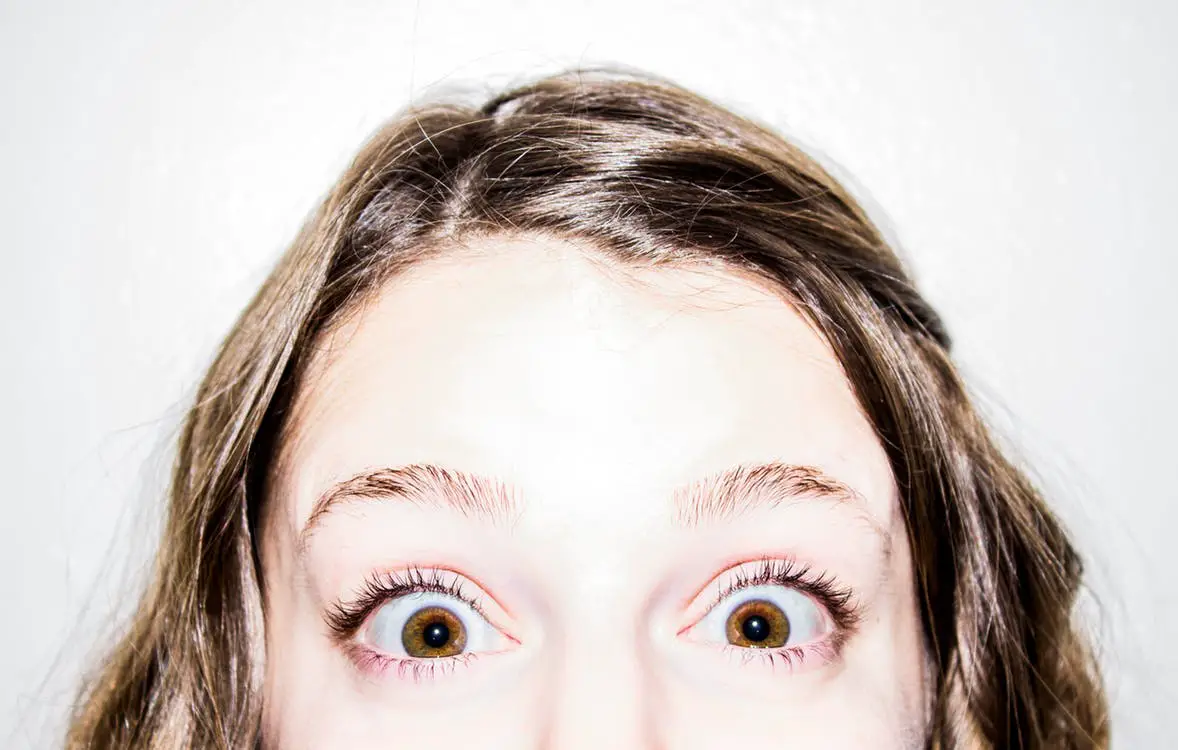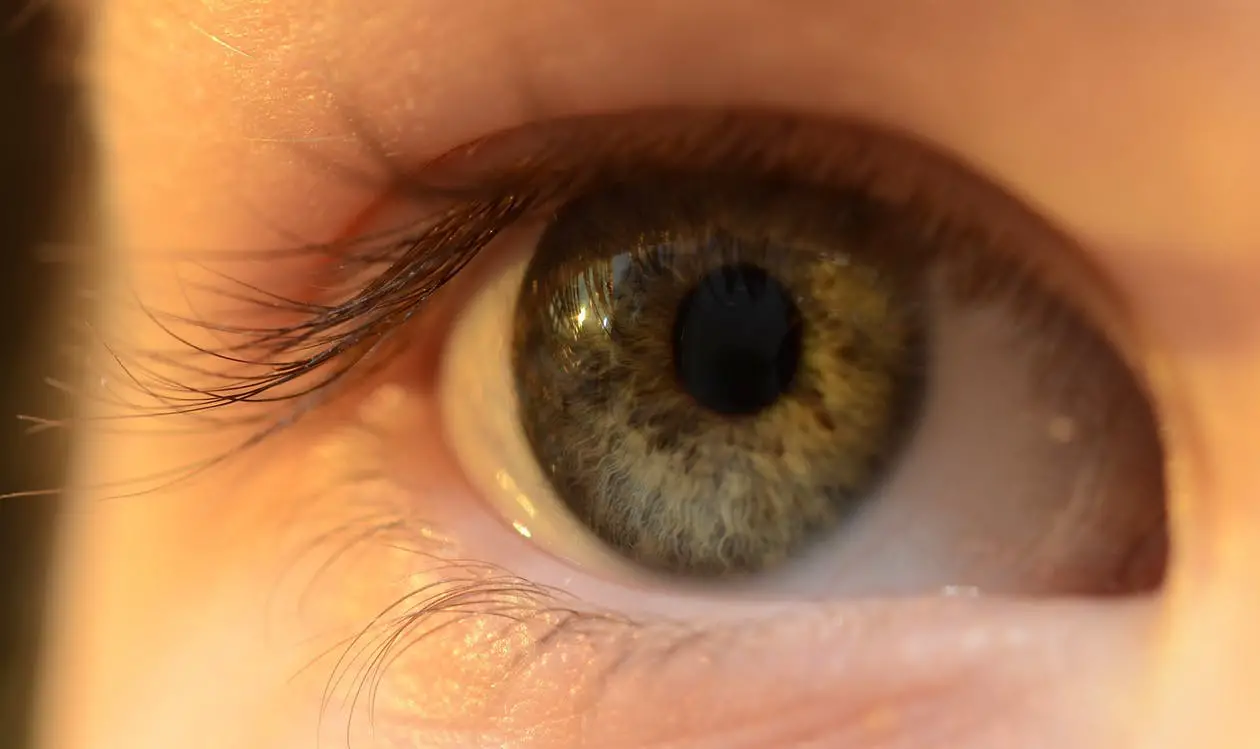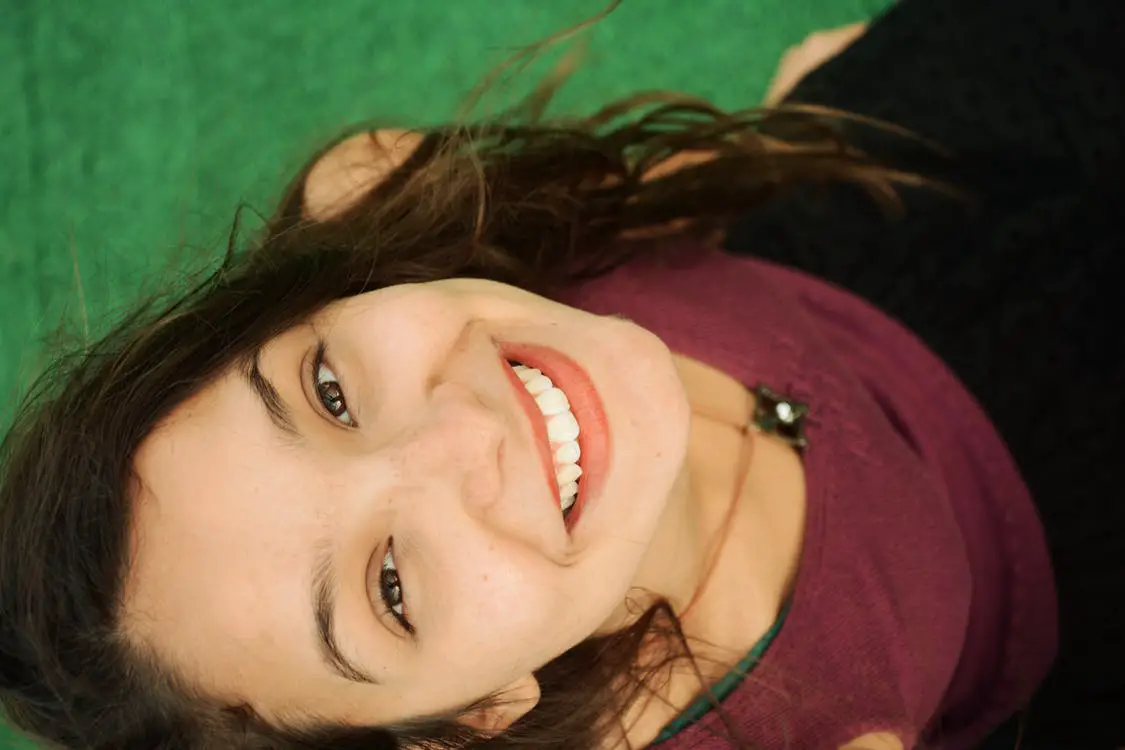![How To Deal With Sensory Overload [9 Tips For Overstimulation]](https://happyrubin.com/wp-content/uploads/2019/12/ik-ben-overprikkeld-150x150.jpg)
Representational systems: is someone visual, auditory or kinesthetic?

What are representation systems and how do you know if someone ‘is’ visual, auditory or kinesthetic? This is very useful to know, for example if you want to teach someone something. For example, some people are very good at kinesthetic learning. You can read how to assess someone for their representational systems in this article.
Contents of this page:
What are representation systems?
These are the five senses, or modalities, which we know as: visual, auditory, kinesthetic, olfactory, gustatory and auditory-digital (talking to yourself).
These senses can also be active mentally, within. Hence the name: representation systems: the human brain codes and represents communication and information in thoughts in order to understand the world. We think by seeing things in front of us, talking to ourselves and experiencing feelings.
How do I know if someone’s primary / preference system is visual, auditory, or kinesthetic? 3 ways!

Consider the descriptions below as generalizations of how people who find themselves in a particular representation system react and process information. In addition, a person’s preferred system is context-bound and time-bound. Also keep in mind that in some people the preference system is much more dominant than the other systems and in some people it is more balanced.
NLP is not about ‘overgeneralizing’ these systems that are intended as archetypes. That would otherwise be limiting. NLP looks at the usefulness of this: recognizing and using the systems that an individual is using in the moment. Constant calibration is recommended as there are always exceptions to a dominant representation system.
Way 1: look for typical characteristics of the representation systems
Q: Visual
- Rapid breaths, from the top of their chest. As a result, this person often has a high-pitched voice as well.
- Head is pointed up, with eyes regularly pointed towards the sky to seek out visual information
- Fast speech (in a high tone) because they are describing a whole series of pictures and videos.
- Lots of gestures and points, because they create images around them and move their hands to the images to do actions with them while they speak.
- Well-groomed appearance, clothes, likes cleanliness, etc.
A: Auditory
- Breathing from the center of the chest.
- Speaks in a pronounced, intentional way (rather than quickly).
- High chance of being distracted by sound due to their higher auditory consciousness.
- They learn best by listening, talking and saying it again. Loves verbal feedback and likes to talk things through. Remembers verbal instructions very well.
K: Kinesthetic
- Highly developed awareness of feeling and touch.
- Breathing from the bottom of the abdomen, slowly and deeply.
- Slow speech.
- Uses touch to communicate and is okay with being touched.
- Loves to move around and enjoy hands-on activities. So likes physical activities such as sports.
Ad: Auditory-digital
- Like talking in quotation marks. And then I say to myself, “Wow, that would be a good idea!”
Way 2: predicates
By paying attention to predicates , you can also find out the dominant representation system for a particular context.
Way 3: eye movements
You can also calibrate for eye movements. This is intensively practiced in NLP courses.
Primary and input representation systems

- The primary / preferred representation system is generally someone’s preferred representation system . This person prefers and most often finds himself in a certain context.
- The lead / input representation system is the very first representation system used in a particular context. It’s someone’s favorite way to bring information to our minds. It is a kind of access point to ‘request’ multiple memories. It is therefore the first element in a TOTE strategy .
Example: someone with a primary kinesthetic representation system must first use an image (leading / input representation system) in order to evoke the corresponding feeling, which is their primary preference.
- Also there is the reference system which is a person’s way of checking whether the information from the brain is correct.
- You can also use an overlapping representation system. This is a way to still achieve someone’s difficult / seldom to reach representation system by means of intermediate steps. For example, if someone is not good at feeling but very good at seeing images, you can first go from those images to the auditory representation system before moving on to the kinesthetic representation system.
The relationship of representation systems with the NLP Communication Model
Representation systems correspond to ‘First Access’ in the NLP communication model. As you have learned in the NLP Communication Model, we as humans process the data from the external world through our sensory receptors and through cortical projections, after which we add personal meaning. We then process the data in representation systems.
The three main ones are: visual, auditory and kinesthetic. In addition, there is the olfactory and gustatory representation system. Finally, there is the auditory digital system, also known as the internal dialogue. This is a very valuable system for planning, summarizing, drawing conclusions, choosing a direction and understanding things.
How do you translate the experience of a kinesthetic person for a visual person?

We take the example of two partners. She’s visual, he’s kinesthetic. He constantly leaves his things lying around to relax after work. She does not think that it looks like in the house, and always addresses him about it, but without result. How should the message be for him so that it gets across? As follows: “What would it be like if your wife forgot to shower after a day at the beach, went to bed, and then the bed was full of sand? So that’s how your wife feels when you throw everything around. ‘
Synesthesia: one representation system automatically invokes the other
Suppose you hear the sound of the ice cream van, and you already taste the ice cream in your mouth … Or if you hold the ice cream in your hand, remove the packaging and immediately think of the sticky feeling on your hands afterwards. ice cream … And you take the first bite …
When several representation systems are activated simultaneously, we call this synaesthesia. When this happens with submodalities , we call it a driver.
Have you ever experienced …
- That someone who’s visual talks really fast, while you’re kinesthetic and … what … did … you … then … about … that … person?
- That a salesperson in the plumbing shop wanted to tell you all about how beautiful the bath is, while you just had to feel how you are in it to be convinced? It happened to the so calm, grounded, kinesthetic UNLP trainer Sylvia de Vries. Then the salesperson should have just dragged her into the tub so Sylvia could feel herself in it – to be convinced.
Exercise: Recognizing representation systems in people
A tells a story / experience. B and C pay attention to all clues (eye movements, predicates and typical characteristics) that reveal which representation system A is in. A useful starting question could be: tell us something nice!
Also, do this five times with someone you don’t know and do this while watching a TV interview.
Swapping representation systems as an intervention

The representation system someone uses is often not where the solution lies. The solution lies in a different representation system (or another logical level).
So lead such a person to another representation system so that there can no longer be access to the old behavior.
Step 1: Find out which representation system is causing the problem. “I can hear the sound of my boss’s voice, which makes me feel stressed. I react kinesthetic with a nervous feeling and it is impossible for me to work out anything with my hands.
Step 2: Switch representation system while doing the problem. Then use the other representation system! Draw a diagram or look for pictures that illustrate your idea. Working with colors. Telling the story in the form of a comic. But what do you do when you get into context with the problem? Then keep making that image. As long as you function in the visual representation system, you will remain calm.
A woman with a fear of heights visualized falling as she stood by the window. Bandler: Sing the national anthem in your head as you walk back to the window.
To do this you use ‘overlap’ : helping the other to enter a level of representation that is very little used, or that the other finds difficult to use. Start by creating a representation with only the primary (dominant) system. Slowly add the next most used system, and finally add the system that the other person has the most difficulty with.
Predicates match ensures report . But mismatching predicates is a change technique:
“I feel such a heavy feeling …” First track: “I get good grip on what you feel …” and then lead to a new representation system: “And what if you like looking at ?”
Read more about representation systems and NLP
Would you like to read more about representation systems? This is one of the basic elements of NLP. Check the NLP book list to see which recommended books you have left behind.

![5 Best Self Care Tips For College Students [#1 Advice]](https://happyrubin.com/wp-content/uploads/2021/09/the-best-self-care-tips-for-college-students-440x264.jpg)
![How To Stick To New Year’s Resolutions: 9 Tips [Smart & Sure Ways]](https://happyrubin.com/wp-content/uploads/2019/12/tips-voor-goede-voornemens-440x264.jpg)
![How To Stop Being So Hard On Yourself [9 Great Tips]](https://happyrubin.com/wp-content/uploads/2019/12/we-moeten-zoveel-van-onszelf-en-anderen-150x150.jpg)

![19 Best Ice Breaker & Get-To-Know-Eachother Games [Fun & Simple]](https://happyrubin.com/wp-content/uploads/2018/02/leukste-ijsbrekers.jpeg)
![Becoming More Social: 41 Tips [Improving Social Skills] [List]](https://happyrubin.com/wp-content/uploads/2018/06/sociale-vaardigheden1.jpeg)
![How to start a conversation with anyone: 15 tips [Making contact]](https://happyrubin.com/wp-content/uploads/2017/08/gesprekstechnieken1.jpeg)
![372 Friend Tag Q&A Questions [Best Friend Quiz]](https://happyrubin.com/wp-content/uploads/2019/05/best-friend-tag-vragen-voorbeelden.jpg)



![Clingy & controlling behavior of partner/date [Extreme examples]](https://happyrubin.com/wp-content/uploads/2020/06/claimerig-gedrag-van-partner-eigenschappen-en-voorbeelden-150x150.jpg)

![How to recognize if a man is in love [Signals & his body language]](https://happyrubin.com/wp-content/uploads/2020/05/verliefd-gedrag-van-mannen-herkennen-150x150.jpg)


![Free will and religion / theology [Verses & Quotes on free will]](https://happyrubin.com/wp-content/uploads/2020/10/religion-on-free-will-quotes-1050x640-1-150x150.jpg)

![Dealing With Setbacks & Hardship [Lessons & Examples]](https://happyrubin.com/wp-content/uploads/2018/11/omgaan-met-tegenslag-tips-hoe-dan.jpeg)
![NLP Agreement Frame: Use these exact sentences [Examples]](https://happyrubin.com/wp-content/uploads/2020/10/agreement-frame-nlp-1125x640-1-440x264.jpeg)
![122 Best Comebacks In Any Situation [Best Examples]](https://happyrubin.com/wp-content/uploads/2020/06/beste-comebacks-technieken-tips-440x264.jpg)
![Using Hypnosis to Stop Smoking [HowTo]](https://happyrubin.com/wp-content/uploads/2020/05/stoppen-met-roken-door-hypnose-150x150.jpg)
![Presuppositions language pattern: meaning & examples [NLP]](https://happyrubin.com/wp-content/uploads/2020/04/wat-zijn-vooronderstellingen-150x150.jpg)
![Peripheral Vision: Meaning & Exercise [Essential Skill]](https://happyrubin.com/wp-content/uploads/2020/04/perifeer-zicht-trainen-tips-150x150.jpg)

![How To Start A Coaching Business [21 Smart Tips]](https://happyrubin.com/wp-content/uploads/2018/11/coachingpraktijk-starten-tips.jpeg)
![How to make dreams come true? [33 tips to realize dreams 100%]](https://happyrubin.com/wp-content/uploads/2018/05/dromen-mijlpalen.jpeg)
![How To Become Rich? 27 Millionaire Tips [Guaranteed To Work]](https://happyrubin.com/wp-content/uploads/2018/01/hoe-kan-ik-rijk-worden.jpeg)
![77 Best Online Marketing Tools [Recommendations] [Also Free]](https://happyrubin.com/wp-content/uploads/2018/08/beste-onlne-marketing-tools-tips.jpeg)
![Complete List Of Virtues & Qualities [Including Explanation]](https://happyrubin.com/wp-content/uploads/2018/12/kernkwaliteiten-uitleg.jpeg)
![Being Attentive: How Do You Do That? [Meaning & 9 Tips]](https://happyrubin.com/wp-content/uploads/2019/05/attent-zijn.jpg)
![Being Conscientious: Meaning Of This Virtue [Explained]](https://happyrubin.com/wp-content/uploads/2018/07/Consciëntieus-persoon.jpg)


![Best Books About Burn-Out [Top 10] [Update 2025]](https://happyrubin.com/wp-content/uploads/2020/06/beste-boeken-over-burnout-lijst-440x264.jpg)
![Best Self-love Books [Top 10] [Update 2025]](https://happyrubin.com/wp-content/uploads/2020/04/beste-boeken-over-zelfliefde-aanraders-440x264.jpg)
![Life changing books: 10 books that change your life [2025 Update]](https://happyrubin.com/wp-content/uploads/2020/03/levensveranderende-boeken-tips-150x150.jpg)
![Top 10 Best Books: Recommendations Per Genre [2025 Update]](https://happyrubin.com/wp-content/uploads/2019/12/best-books-per-genre-150x150.png)
![Best Books On procrastination: Must Reads [List] [2025 Update]](https://happyrubin.com/wp-content/uploads/2019/11/beste-boeken-over-uitstelgedrag-tips-150x150.jpg)
![Joe Dispenza: Events To Attend [2025 & 2026] [All Info]](https://happyrubin.com/wp-content/uploads/2020/02/joe-dispenxa-events-440x264.png)
![Best Online Study Options [Online Education Top List]](https://happyrubin.com/wp-content/uploads/2019/03/best-home-study-options-440x264.png)
![Teachable Review & Experiences 2025 [Bad Online Training Tool?]](https://happyrubin.com/wp-content/uploads/2020/02/Teachable-review-ervaringen-150x150.png)
![Audible Review, Experiences & Special Discount [Scam?]](https://happyrubin.com/wp-content/uploads/2020/01/audible-review-ervaringen-150x150.png)
![Guest Posts Wanted [Free & Always Directly Accepted]](https://happyrubin.com/wp-content/uploads/2019/05/gastbloggen-regels.jpg)
